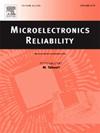基于田口正交试验设计和Harris Hawks优化算法的QFN焊点弯曲-振动耦合应力优化研究
IF 1.9
4区 工程技术
Q3 ENGINEERING, ELECTRICAL & ELECTRONIC
引用次数: 0
摘要
建立了QFN (Quad Flat No-Lead package)焊点的三维有限元分析模型,进行了弯曲-振动耦合条件下的应力-应变分析。设计并成功进行了QFN焊点弯曲-振动耦合应变测量的验证实验。基于田口正交试验设计,通过方差和极差分析,研究了焊盘长度、焊盘宽度和焊点高度对焊点弯曲-振动耦合应力应变的影响。以弯曲-振动耦合应力为优化目标,采用Harris Hawks优化算法对焊点结构参数进行优化。结果表明,焊点高度对弯曲-振动耦合应力的影响最大。QFN焊点的最佳参数组合为:焊盘长度为0.62 mm,焊盘宽度为0.21 mm,焊点距高为0.09 mm。优化后的参数组合使弯曲振动耦合应力降低34.8%。研究结果为降低QFN焊点的弯曲-振动耦合应力提供了理论指导。本文章由计算机程序翻译,如有差异,请以英文原文为准。
Study on the optimization of bending-vibration coupling stress of QFN solder joints based on Taguchi orthogonal experimental design and Harris Hawks Optimization algorithm
A three-dimensional finite element analysis model of QFN (Quad Flat No-Lead package) solder joints was established, and stress–strain analysis under bending-vibration coupling conditions was conducted. A validation experiment for measuring the bending-vibration coupled strain of QFN solder joints was designed and successfully carried out. Based on Taguchi Orthogonal Experimental Design and analysis of variance and range, the effects of pad length, pad width, and solder joint standoff height on the bending-vibration coupled stress and strain of solder joints were investigated. Taking the bending-vibration coupled stress as the optimization objective, the structural parameters of the solder joints were optimized using the Harris Hawks Optimization (HHO) algorithm. The results show that the solder joint standoff height has the greatest influence on the bending-vibration coupled stress. The optimal parameter combination for the QFN solder joints is: pad length of 0.62 mm, pad width of 0.21 mm, and solder joint standoff height of 0.09 mm. The optimized parameter combination reduced the bending-vibration coupled stress by 34.8%. These findings provide theoretical guidance for reducing the bending-vibration coupled stress in QFN solder joints.
求助全文
通过发布文献求助,成功后即可免费获取论文全文。
去求助
来源期刊

Microelectronics Reliability
工程技术-工程:电子与电气
CiteScore
3.30
自引率
12.50%
发文量
342
审稿时长
68 days
期刊介绍:
Microelectronics Reliability, is dedicated to disseminating the latest research results and related information on the reliability of microelectronic devices, circuits and systems, from materials, process and manufacturing, to design, testing and operation. The coverage of the journal includes the following topics: measurement, understanding and analysis; evaluation and prediction; modelling and simulation; methodologies and mitigation. Papers which combine reliability with other important areas of microelectronics engineering, such as design, fabrication, integration, testing, and field operation will also be welcome, and practical papers reporting case studies in the field and specific application domains are particularly encouraged.
Most accepted papers will be published as Research Papers, describing significant advances and completed work. Papers reviewing important developing topics of general interest may be accepted for publication as Review Papers. Urgent communications of a more preliminary nature and short reports on completed practical work of current interest may be considered for publication as Research Notes. All contributions are subject to peer review by leading experts in the field.
 求助内容:
求助内容: 应助结果提醒方式:
应助结果提醒方式:


